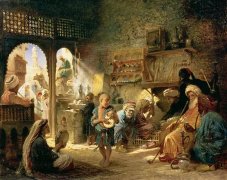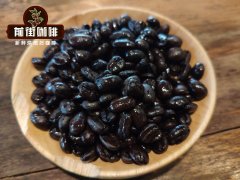Why does coffee still cost 1 euro in Italy? Why is espresso popular?

According to some reports, espresso (after water) is the second largest consumer drink in Italy. Millions of cups of espresso are drunk every day across the country. In early 2020, the consortium protecting traditional espresso even submitted a UNESCO application to protect the Italian roots and characteristics of espresso.
However, despite inflation (the value of 1 euro in 2000 is 1.39 euros today-the cumulative price has changed by 39%), the price of espresso remains the same nationwide. Even in the more expensive parts of Italy, the average price of a single espresso is about 1 euro.
The significance of espresso in Italy
Italian coffee has been an important part of Italian culture since 1884, when Angelo Angelo Moriondo built a machine that used steam to reduce the time it takes to make a cup of coffee.
Espresso machines began to be popular in coffee shops throughout the early 20th century. Soon, this led to the emergence of an "espresso bar" in Italy. However, in the early 1900s, most of the consumption of outdoor coffee was reserved for the upper class.
However, in 1911, the Italian authorities imposed maximum prices on certain "necessities", including coffee. Given the low price, espresso bar operators are trying to cut corners and save money elsewhere, including services. If customers sit down to drink coffee instead of standing up, many of them will charge an extra charge.
Professor Jonathan Morris is a professor of historical studies at the University of Hertfordshire. He has published books including Coffee: global History. He is also a member of the traditional Italian espresso alliance.
Jonathan told me that these pricing rules were and still are good for independent espresso. "imposing a fixed price on coffee can prevent the price of one bar from being lower than another," he explained. " The council controls the total number of bars in operation and sets a schedule for the number of days each bar can be open.
"this was recognized by many [independent] owners in the postwar period. It effectively ensures that operators of more "modern" business models such as chains are discouraged from entering the market. "

How do consumption trends affect the price of coffee?
About 97% of Italian adults drink coffee every day. In Italian coffee culture, it is not uncommon to drink a few cups of espresso throughout the day.
In Italy, the strong preference is bold, strong, bitter coffee. Espresso bars often use dark barbecue, sometimes even a mixture of Arabica and robusta coffee to increase caffeine content.
Usually, coffee drinkers prefer espresso roasting when you are in southern Italy. In addition, Jonathan added that espresso shots in the south are shorter than those in the north. "the classic espresso is 7 grams in the basket and 25 milliliters in the cup. Usually, this means using a basket of 14 grams to brew two 25ml lenses.
"however, there are great regional differences, especially from north to south. For example, the ristretto is actually the standard size for brewing coffee in Naples. "
Espresso in the south is also usually cheaper. Of all the Italian cities surveyed, the price of espresso in Bari was the lowest, at 75 euros. Coffee is the most expensive in the northern city of Bologna, with an average price of 1.10 euros.
The Italian affinity for the deeper roasting of espresso also means it is easier to hide defects and use shoddy beans. Although this is a summary, it means that historically, some Italian roasters have been able to buy cheaper raw coffee, allowing espresso bars to keep their prices low.
In fact, Italian coffee bars make unbelievably high profits on espresso, averaging 0.96 euros per serving. Throughout the supply chain, the roaster earns 0.18 euros per cup, while the average manufacturer earns only 0.02 euros.
In Italy, the average service time of espresso is just over 30 seconds. In addition, traditionally, Italians can only drink up to three sips of coffee. All these help to maintain a higher customer turnover and lower beverage costs, thus maximizing the profit margin of the bar.

Is there a driving force to raise the price of coffee?
Codacons, the Italian consumer regulator, complained in May that the price of espresso was too high. This is partly due to the Italian government's "Covid-19 tax" on widely consumed products, such as coffee.
Codacons pointed out that in Rome, the price of espresso rose from 1.10 euros to 1.50 euros, while in Milan it was as high as 2 euros.
Regulators also complained about the price of Starbucks' espresso in Italy after the company opened two stores in Rome and Milan in 2018.
Obviously, many Italians want to keep espresso affordable. However, after doing so, many espresso bars will continue to use cheaper, lower-quality coffee and then roast it black, ostensibly curbing the development of the professional field.
Dario Fociani is the co-founder of Lu Professional Caf é in Rome. He is also a competing barista and has been shortlisted for the Coppa Italia tasting Championship final. "roughly speaking, I think about 1% of people are aware of the third wave of coffee. There are a lot of people who want to stay the same.
People are used to thinking that coffee is cheap, and the profit of coffee is as high as 0.90 euros. Many unions and groups keep saying this in the newspapers when someone tries to raise the price of coffee.
"but in fact, fixed costs are so high compared to other products such as alcohol, bread and pizza. By contrast, coffee has almost no profit margin. "
Jonathan told me that there is a small but emerging movement among Italian business owners who want to raise the price of coffee, but he points out that they are facing difficulties. There is a more general lament among roasters and owners that the price of a common espresso and its need to generate higher profits.
"this is a thorny issue in many ways because it tries to change the long history of mainstream culture [in Italy]."
The future of Italian espresso
The arrival of chains such as Starbucks in Italy has played a role in "reforming" the way people watch coffee in the country. Consumers of Italian coffee are paying more attention than ever to the producer side of the coffee supply chain, not just roasting, brewing and consumption.
About 90% of Italy's coffee bars are independent, but last year there were only 100 boutique coffee shops in the country. Dario says he still thinks people are unwilling to accept the new standards and higher prices for specialty coffee.
"I think what scares [more] Italians is not the idea of mixing or single origin, but the different levels of baking available," he said. " "Italians are not used to baking."

In recent years, global boutique coffee events have been held in Italy, such as the Coffee World and the 2014 World Barista Champion. These help people pay more attention to new trends and a wider range of boutique coffee, but there is still a long way to go. Motivating most espresso and coffee shops to use more expensive coffee will require a lot of work.
Dario believes that Italian boutique coffee must admit that its origin is important. He believes that boutique coffee shops should show more traditional "Italian" flavor and lighter roasting. This will help consumers "easily" try new flavors and aromas and make them more willing to pay high prices for high-quality coffee, he said.
"We began to offer moderate baking as well as lighter baking for people to choose from. We reached the point of brewing seven kilos of coffee in the store every day. Now, we enjoy a high reputation among hotel staff, and even if the profit margin is very low, we are beginning to see results. "
But Jonathan believes there is a need for a broader change in coffee shop culture. "maybe the use of space in the coffee bar has changed, and young customers prefer & # 39; stay time & # 39, providing a way to compromise between customers and operators and provide a more sustainable price for espresso in the future."
Tradition and culture mean that espresso is still affordable in Italy. However, some people believe that this is also an obstacle to the popularity of specialty coffee in the country.
An increase in interest may lead people to accept a higher price proportional to coffee. However, people have long been in pursuit of dark and strong espresso, coupled with the cultural "highest price" that has existed for decades, 1 euro espresso will become the staple food in Italy for some time.
Important Notice :
前街咖啡 FrontStreet Coffee has moved to new addredd:
FrontStreet Coffee Address: 315,Donghua East Road,GuangZhou
Tel:020 38364473
- Prev

Suggestion on brewing wind-stained coffee in Asian coffee-growing countries in India & the production of wind-stained coffee
Professional coffee knowledge exchange more coffee bean information Please follow the coffee workshop (Wechat official account cafe_style) when it comes to the ancient coffee varieties, the native varieties of Ethiopia and the mocha of Yemen are well deserved. In fact, India also began to grow coffee in the 16th and 17th centuries, which can be regarded as the third oldest coffee variety, but because there were many coffee genes in India at that time.
- Next

Where is the way out for deep-roasting coffee in the environment where shallow roasting is popular? Should coffee be roasted out of oil?
As we all know, with the rise of the third wave of coffee, medium and light roasting is becoming more and more popular. But the first cup of coffee for almost everyone in the world is black. In recent years, newer and lighter baking curves have become more and more common and easy to use. They are also mainly related to higher quality and more expensive specialty coffee. To learn more about why coffee has always been
Related
- Beginners will see the "Coffee pull flower" guide!
- What is the difference between ice blog purified milk and ordinary milk coffee?
- Why is the Philippines the largest producer of crops in Liberia?
- For coffee extraction, should the fine powder be retained?
- How does extracted espresso fill pressed powder? How much strength does it take to press the powder?
- How to make jasmine cold extract coffee? Is the jasmine + latte good?
- Will this little toy really make the coffee taste better? How does Lily Drip affect coffee extraction?
- Will the action of slapping the filter cup also affect coffee extraction?
- What's the difference between powder-to-water ratio and powder-to-liquid ratio?
- What is the Ethiopian local species? What does it have to do with Heirloom native species?

